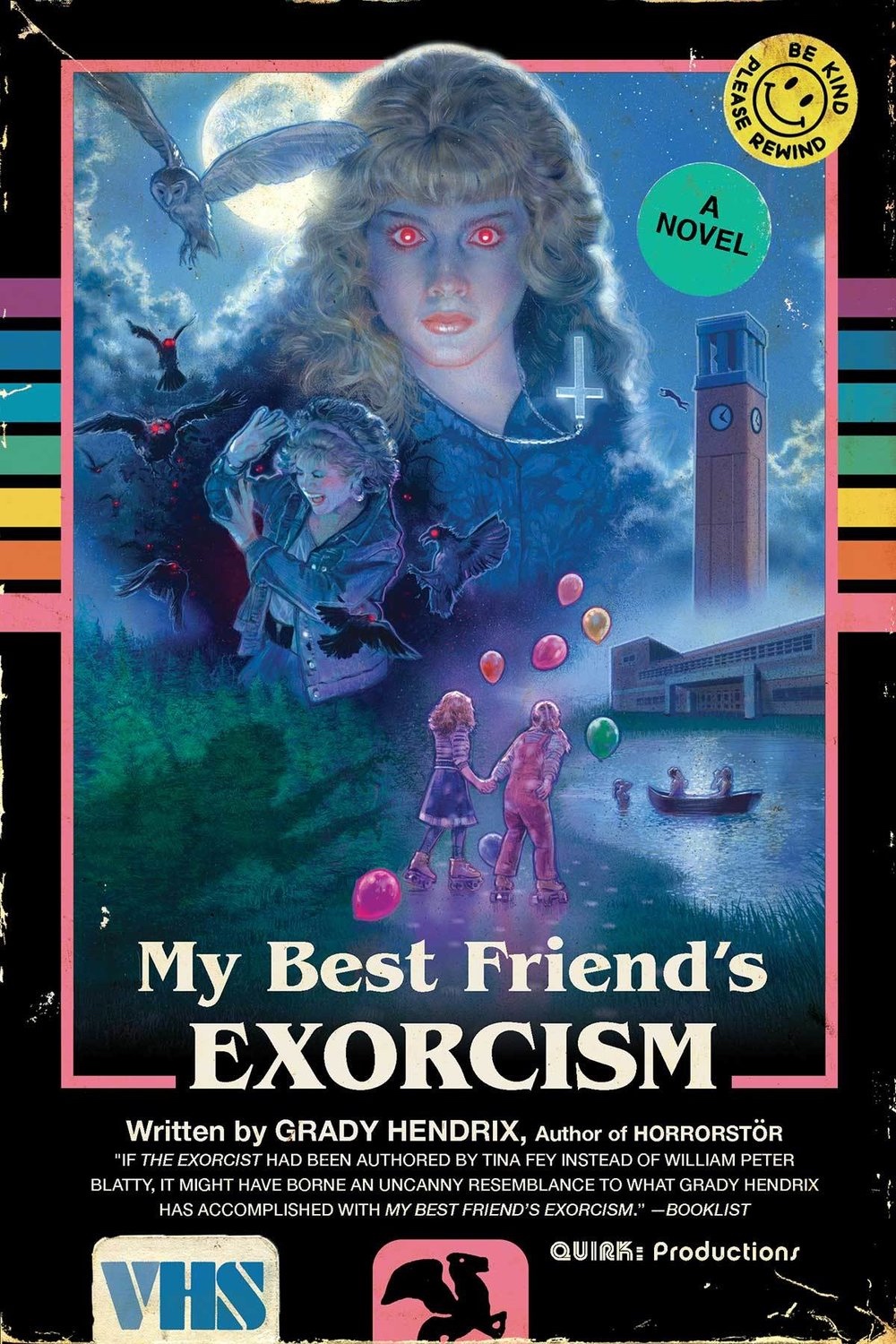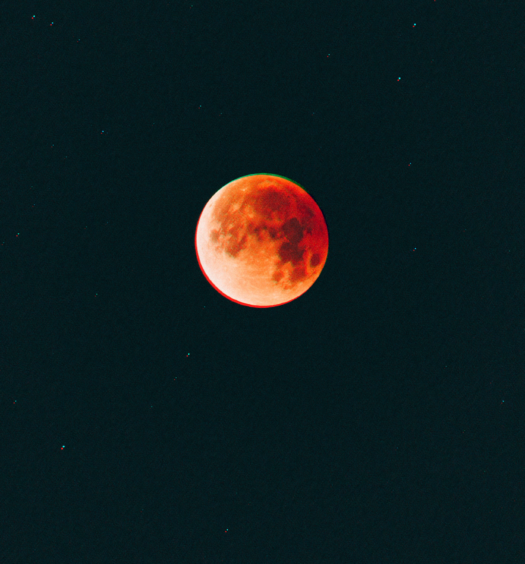Particularly with My Best Friend’s Exorcism and We Sold Our Souls, the songs and albums referenced throughout could serve as a soundtrack for the tales being told. When you’re writing, do you typically pair up the songs or albums with the chapters after they are written, or does the music work its way into the process at an earlier stage?
It really varies. I write most of my books in silence, but I copy edit with music and that’s usually whatever it takes to get me through the day. With My Best Friend’s Exorcism the music and chapter titles came in during the copy editing phase, but with We Sold Our Souls I listened to music throughout. That was a huge part of my process and there are albums that I can’t listen to anymore because I listened to them over and over and over again while writing. If a song is mentioned in that book I probably heard it a hundred times. But it’s a book about music so what else could I do except drown myself in it?
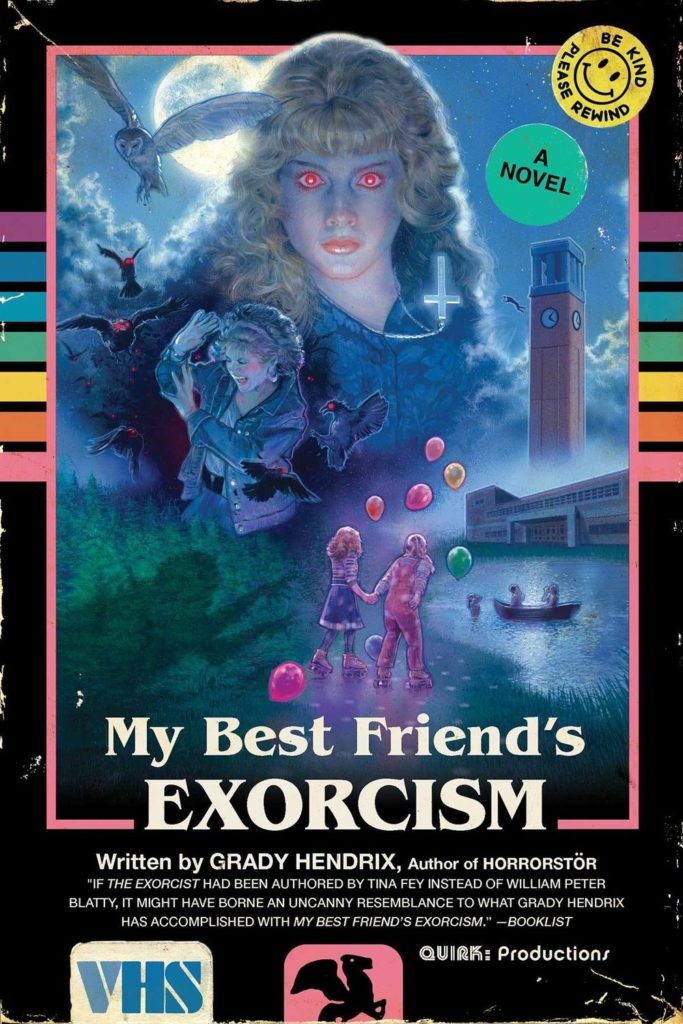
Your books all have a sharp and witty eye toward visual presentation as well. I have the softcover editions of Horrorstör, with its Nordic retail sensibilities, and My Best Friend’s Exorcism, which hearkens back to the eye-catching big boxes of the video store days. I loved the design of the hardcover edition of We Sold Our Souls, with its rocker-bio dust jacket revealing a cover stamped with backwards lyrics lurking beneath. And the new softcover edition of We Sold Our Souls is the spitting image of an issue of Rolling Stone. How involved are you with the design process and artistic direction of the books?
The nice thing about working with a smaller publisher like Quirk is that I get some input into what they’re doing with the design and the back and forth I have with the art director results in some really fun decisions.
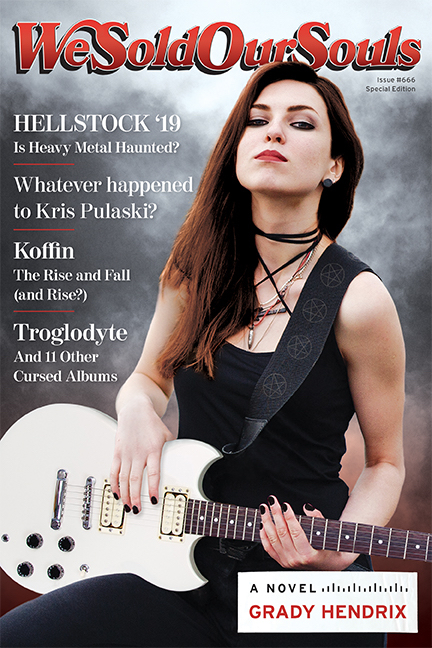
In addition to your fiction, I also found myself unable to put down Paperbacks From Hell. Some of those books I remember seeing on racks in the supermarket or on the shelves of chain bookstores that no longer exist—but there are also some really deep cuts. If you could recommend that readers check out just one book from that heyday of mass market paperback horror, what would it be and why?
Either Joan Samson’s The Auctioneer, which is a modern day American classic (and available through a reprint from Valancourt), or any of the Guy N. Smith Crabs novels because they are completely insane and thoroughly entertaining.
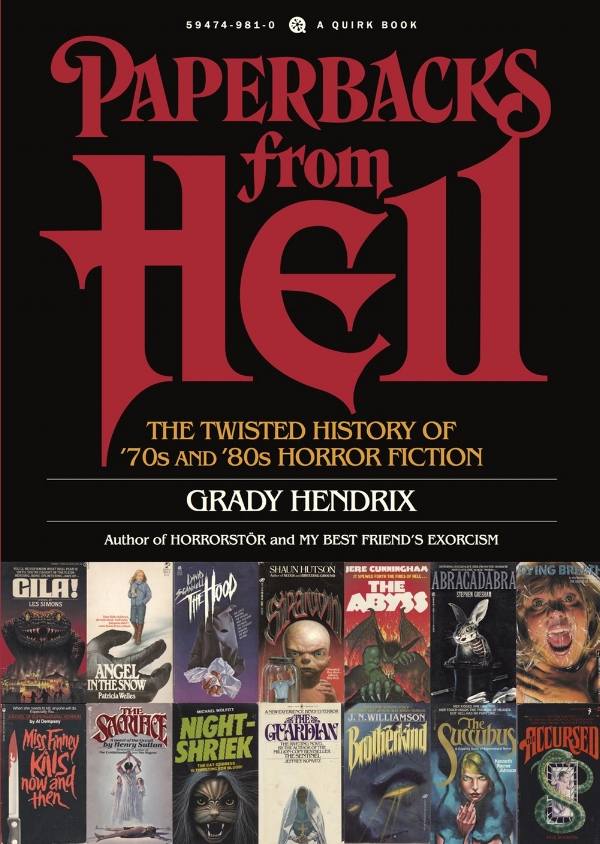
Looking forward a bit, do you anticipate a release of Paperbacks from Hell 2? Are there plans to continue the series of reprints of books mentioned in Paperbacks from Hell?
There’s no plan for a Paperbacks from Hell 2 although I am doing a live show version of a sequel which focuses on teen horror fiction from the 70s, 80s, and 90s. But the Valancourt reprints are continuing. We’re about to announce the next five titles soon.
In recent years, you’ve also worked on the stories and screenplays for Mohawk and Satanic Panic with writer & director Ted Geoghegan. Can you tell us a bit about how your process differs when you’re writing for the screen, and when you’re writing with a collaborator? Is screenwriting something you hope to do more of in the future?
I’ve actually got a fair amount of screenwriting work lined up which is a lot of fun. It’s really different from writing a novel — far less internal and you have to do more with less — but I love it, and learning screenplay structure and how to be efficient with your characters and scenes has had an enormous influence on my novels. I also really like working with a collaborator. Writing can get lonely and it’s fun to have someone there to bounce ideas off of, and to tell you that your plan to insert killer robots powered by human blood in your book is actually a very, very poor idea.
For more info on Grady Hendrix and the many irons in his fire, check out his website. He can also be found on Facebook and Twitter.

Page 1 2

